Inflation and Money Confusion Accompanies Kim Jong Un’s “Tense Food” Remarks
“Sighs and shouts of anger are everywhere in the market. I can hear the sobbing of those who lost money and those who can’t afford the high prices,” said a reporting partner in North Hamkyung [Hamgyong] Province.” June 16, Asia Press
Kim Jong Un recently brought attention to the country’s poor food situation, but his more immediate and unmentioned concern may be growing confusion in the country’s unusual, partially-dollarized monetary system. North Korean won, US dollars, and Chinese yuan all circulate in a system that mixes state-controlled and market-determined wages and prices. After years of relative stability, the wild swings in prices and internal exchange rates in recent days threaten to raise the level of popular desperation and may make reopening trade with China more difficult. Fixing these problems is possible but requires major policy changes on Kim’s part.
Inflation Outside of Pyongyang
North Korean prices have been thrown into disarray amidst a special economic session of the Workers’ Party aimed at correcting problems in the new five-year plan. The won has again jumped in value against the dollar and yuan, according to defector groups that have reliably reported such changes in the past. In the northern part of the country, the price of rice suddenly rose from 4,000–5,000 won per kilogram to 7,000 won—a 67 percent jump since the first of the month, according to a group reporting out of Japan that collects market data using cell phone contacts in several provincial markets. Prices of corn, the other food staple, more than doubled to 5,300 won, indicating turmoil in the markets through which most basic consumer goods are now distributed. Another group reporting from Seoul says the price of rice jumped to 6,300 won per kilogram in Hyesan on the border with China, but oddly remained stable in Pyongyang. Rice and corn prices are normally capped, but in some areas the officials are letting them loose according to the reporting.
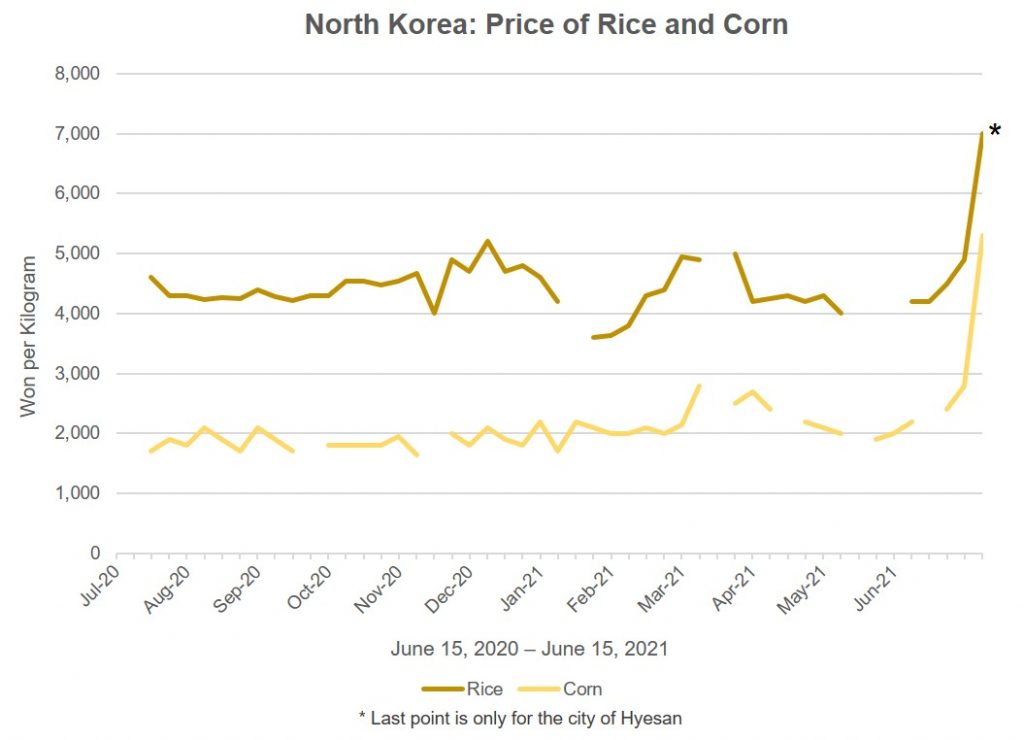
Gasoline and diesel prices also soared in the northern areas. No information on income or wage changes is available, or on who is gaining and who is losing amidst the price volatility. Adding to the confusion, the value of won also soared in exchange for dollars and yuan across the country, the opposite of what one might expect. Farmers, the poorest of the poor in North Korea, are not likely to gain much from price increases as their income is largely determined by their huge unproductive, collective farms. But some speculators and hoarders may strike it rich.
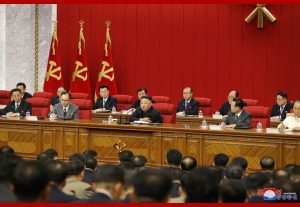
Problems in the markets are exacerbated by coronavirus restrictions on domestic and foreign trade and by this early-summer period, which is normally the worst for food availability as the country awaits fall harvests. Especially now, when little in the way of aid or imports is arriving. In the recent Party Plenum, Kim ordered an all-out campaign to help with summer farm maintenance, including the military, dispensing with previous orders to focus on industry and with little mention of military issues or foreign threats.[1]
Perhaps to mollify broader economic concerns, the Party released a rare aggregate industrial output statistic which shows growth, but in comparison to unknown year-earlier levels. The situation is clouded by the fact that foreign observers including NGO workers and diplomats, are now largely absent, even in Pyongyang where most reside, and no official mention is made of the new inflation woes, a flaw that must be obvious and disconcerting to everyone.
Foreign Exchange Fluctuations
Reports from Daily NK, the South Korean media group with North Korean informants, speculate that traders who may have borrowed won to buy US dollars and Chinese yuan in recent weeks in anticipation of the border opening have likely experienced heavy losses. When that didn’t happen, calls on their loans might have forced quick yuan and dollar sales. The socialist country lacks mechanisms for resolving these kinds of credit problems and rampant dollarization limits the ability of the weak banking system to assist. In fact, a regime attempt to push back the use of dollars and yuan may be at the heart of the immediate problem. Dollarization, while helpful in controlling inflation, is detrimental to the state’s ability to control its own fiscal and monetary policy, and is a thorn in the side of Kim’s dream of self-reliance.
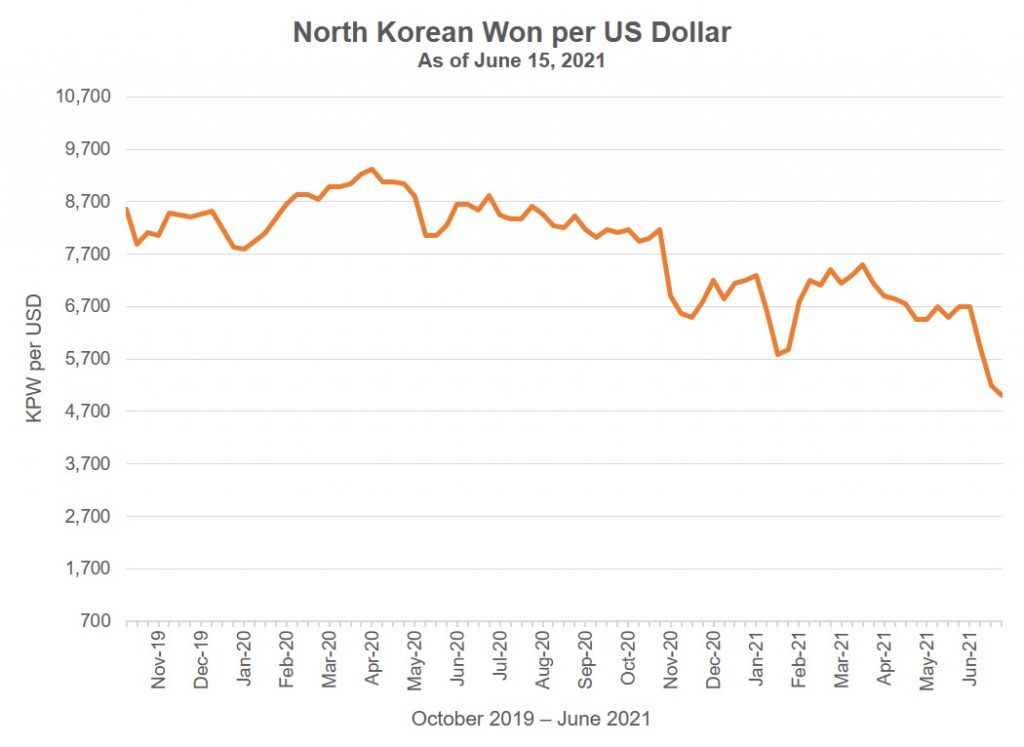
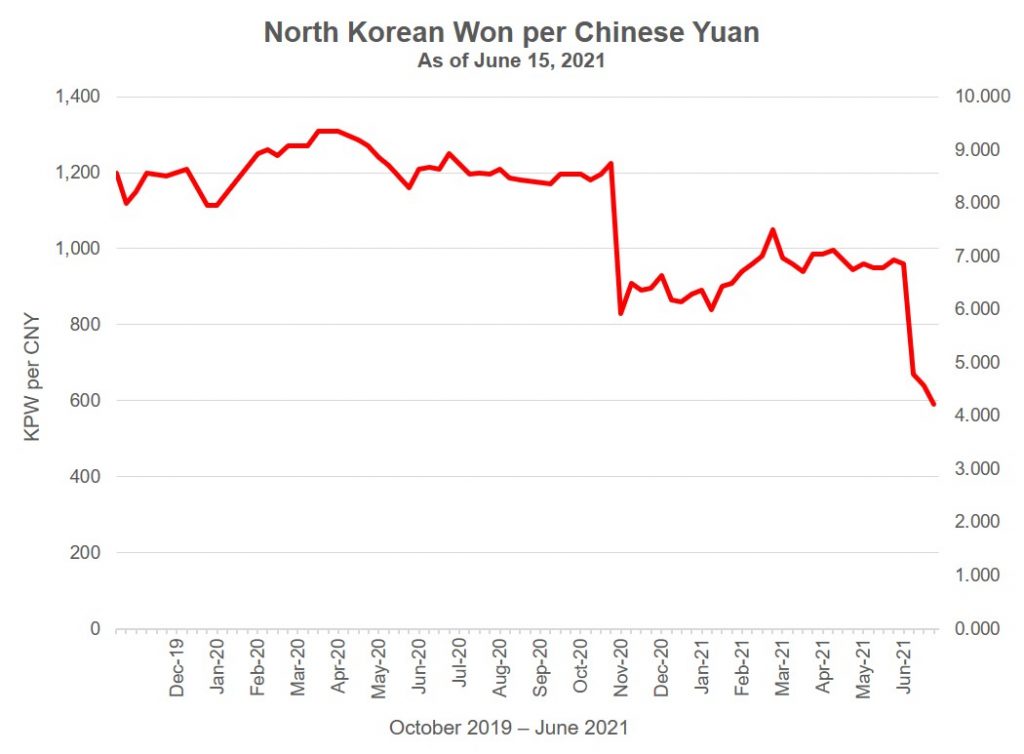
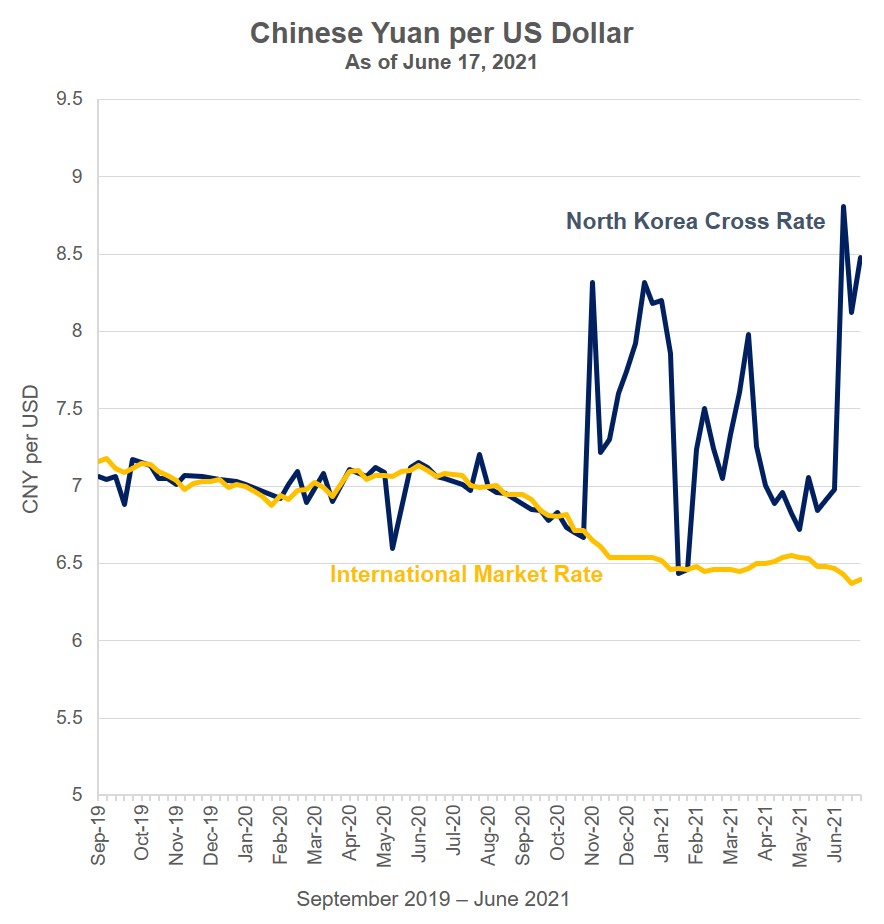
As what happened in October, the won’s surge in value has asymmetrically hit Chinese yuan, leaving it again severely undervalued against the US dollar. This suggests a constraint to normal trading, otherwise, arbitrage—relatively easy with dollars and yuan in widespread use—would maintain the international dollar-yuan rate as it has in the past. It is difficult to see any logic that would explain this divergence, suggesting pressures must be building to force a sudden and disruptive shift in the other direction.
After the October divergence, the cross rates had converged to levels close to the international rate before suddenly breaking away again last week. It is as if some player, even the central bank or a large firm, suddenly unloaded a large amount of yuan in the markets, bought up won, and implemented a rule that disallows traders to use their own won or dollars to buy back the cheap yuan. The result is irrational prices that are sure to snap back when the border is reopened, and trade is allowed. Gasoline, for instance, is now priced at the equivalent of about $8.50 a gallon, far exceeding Chinese or global prices.
Monetary stability had been the hallmark of Kim Jong Un’s tenure as he was able to stop the inflation and currency debasement prevalent in his father’s rule, and stable money has been a boon to market development. He did this by allowing dollarization to expand—the dollars and yuan in circulation would have constrained consumption and offered the public savings vehicles for the first time in the country’s history.
The monetary authorities also likely have kept a tight rein on won-denominated credit and new cash issuance to keep the rate between won-dollar-yuan steady, despite the huge impact of UN sanctions after 2017 that eviscerated the country’s export earnings. But this all changed last October, months after coronavirus concerns closed the border to even import trade.
The closure may have reduced the outflow of hard currency, possibly even inducing a net inflow from remittances and other earnings and thus protected the won, but at the cost of renewed inflation and sharply reduced consumption and living standards. North Korea continues to keep the border closed in part due to lingering concerns about the potential spread of coronavirus, but there is likely also a growing concern about a big jump in imports not countered by a boost in sanction-limited exports.
Conclusion
Kim is not without tools to fight monetary instability but so far has been reluctant to use them, likely perceiving them as weakening his hold on the state. For example, he could maneuver to reduce sanctions, encourage non-sanctioned exports and relieve budget pressures by selling some state property to domestic or foreign buyers, and, most importantly, opening-up wage reforms to improve the country’s abysmal productivity. At some point, even now, inflation may look to him to be a bigger enemy to stability—a term he used in his speech last week—than the United States.
- [1]
“3rd Plenary Meeting of 8th Central Committee of WPK Opens,” Korean Central News Agency, June 16, 2021.
